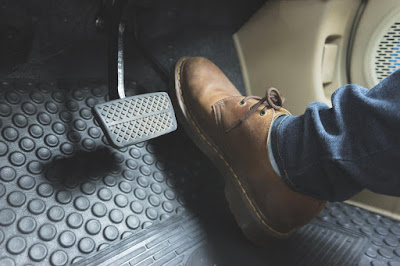For many of us lay-people out there, auto service and car maintenance is a foreign concept. Outside of tire rotation and oil change we don't really know what goes on under your hood when you hit the gas. While that's not a huge deal in today's day and age, knowledge is still power and knowing more about your ride can serve you well in the future.
At Toyota of Orlando, we sat down with our expert auto service techs who suggested a few key terms and parts that you should know about ASAP. Check them all out there!
Car Maintenance Terms and Parts You Should Know By Now
Air Filter
Apart from your oil needing to be changed or your tires needing to be rotated, your air filter needing to be cleaned or replaced definitely comes at a close third place for most common auto services. This part acts as one of the first points of contact for air entering your engine to help with ignition. Without a clean and clear filter, your engine could suffer damage due to air pollutants.
Alternator
If you recently replaced your battery and you're at least 90% sure you didn't leave your headlights on all day, then you could have an alternator problem. This part works in conjunction with your battery to maintain a consistent charge and keep electrical functions on while you drive.
Catalytic Converter
Orlando Toyota cars used to be heavy polluters, but they've evolved with certain car maintenance parts to help them be more environmentally conscious. The catalytic converter is one of the most essential parts used to accomplish this goal. If filters out excess smog from your vehicle's exhaust system and prevents harmful emissions from leaking into the atmosphere.
Coolant
Your engine is always running hot. No, literally. It is. Always. Your engine burns fuel and and air to create power and, if left unchecked, could be considered a ticking time bomb. Enter, coolant. Coolant is an Orlando car maintenance fluid that courses through your engine to maintain a lower temperature and prevent your engine from overheating.
Dipstick
Checking your vehicle's oil periodically is important to maintain the health of your Orlando Toyota car. One self car maintenance job any person can do is check their oil quality with the dipstick. This parts is a silver stick that sticks in your oil reservoir and can help you measure and assess the quality of your motor oil.
Fuel Pump
This car part is responsible for transporting gasoline or diesel fuel to your engine block to then be ignited and turned into power.
OEM
Original Equipment Manufacturer. If you're shopping for auto parts and want to make sure that the accessory you've chosen is compatible, the OEM indicator will ensure that it's 100% compatible. This means that the part is manufactured by the same producer of your vehicle.
Oil Filter
If it seems like everything in your car needs a filter, that's because everything in your car DOES need a filter. Your oil filter removes pollutants from your engine's oil to ensure that your motor oil's condition is well preserved and working properly.
Radiator
An essential part to your Orlando Toyota car maintenance cooling system is the radiator. This part absorbs heat collected by coolant after it has cycled through your engine and allows the fluid to continue to cycle unimpeded.
Spark Plug
Igniting fuel in your car is no easy task and that's where spark plugs come in. This gets your engine running and burning fuel for as long as your keys are turned.
If you feel better versed in car maintenance then it's time to put your knowledge to the test with top quality auto service from Toyota of Orlando! Visit our auto service department at 3575 Vineland Road today.







